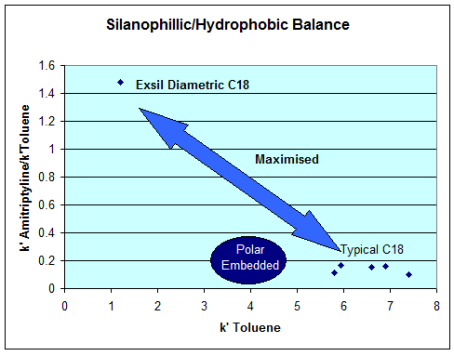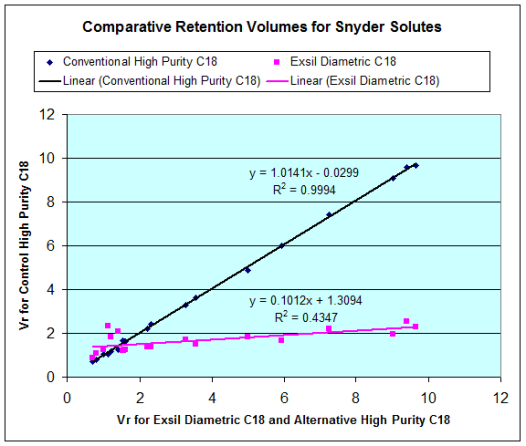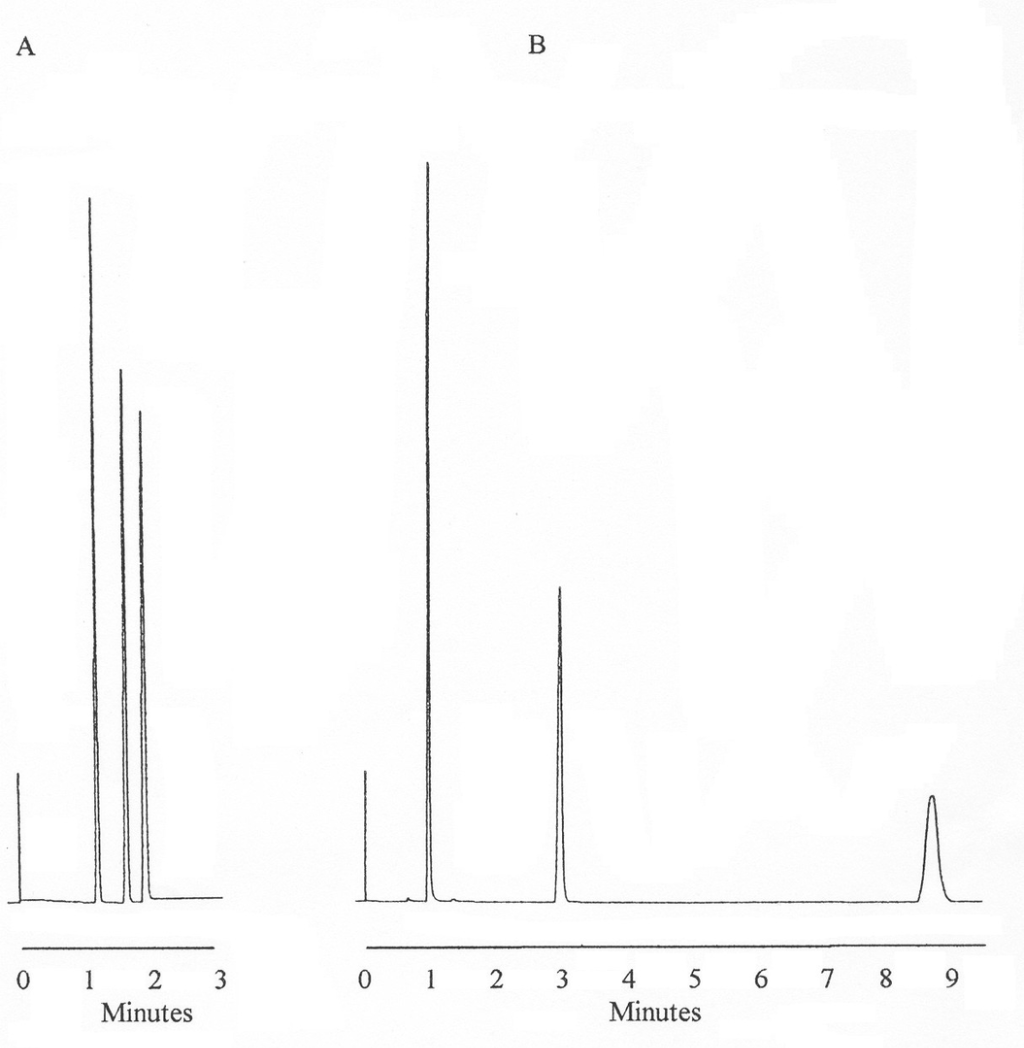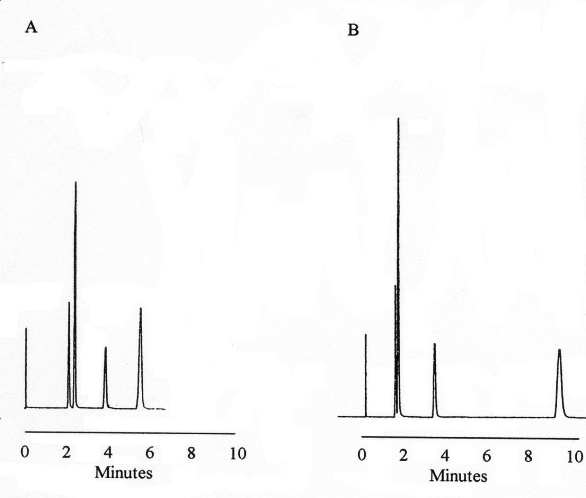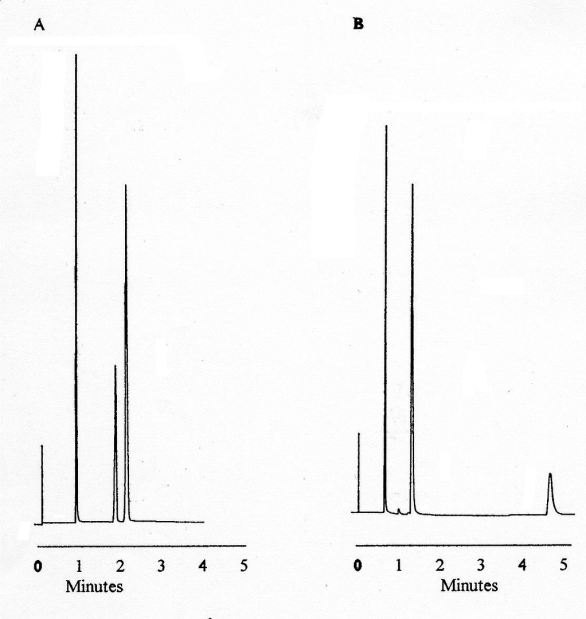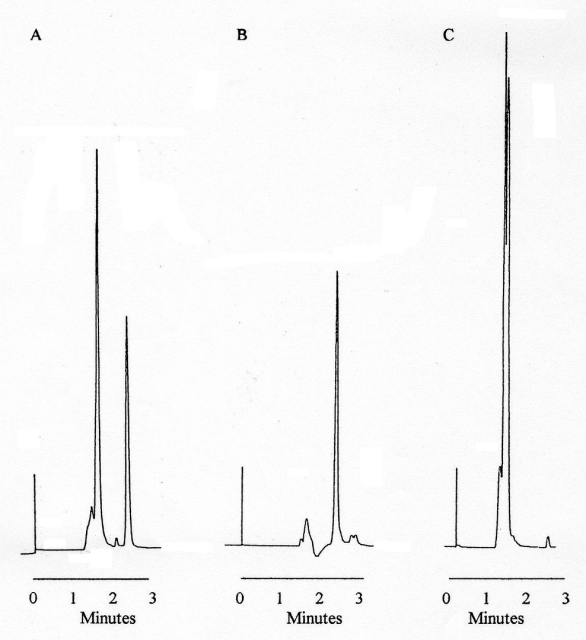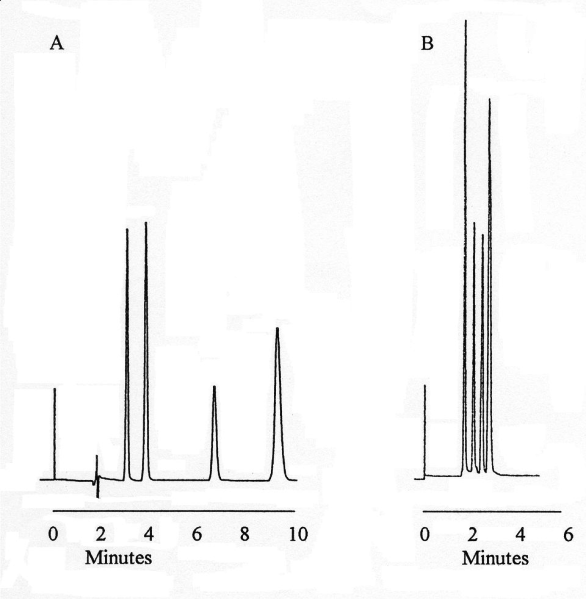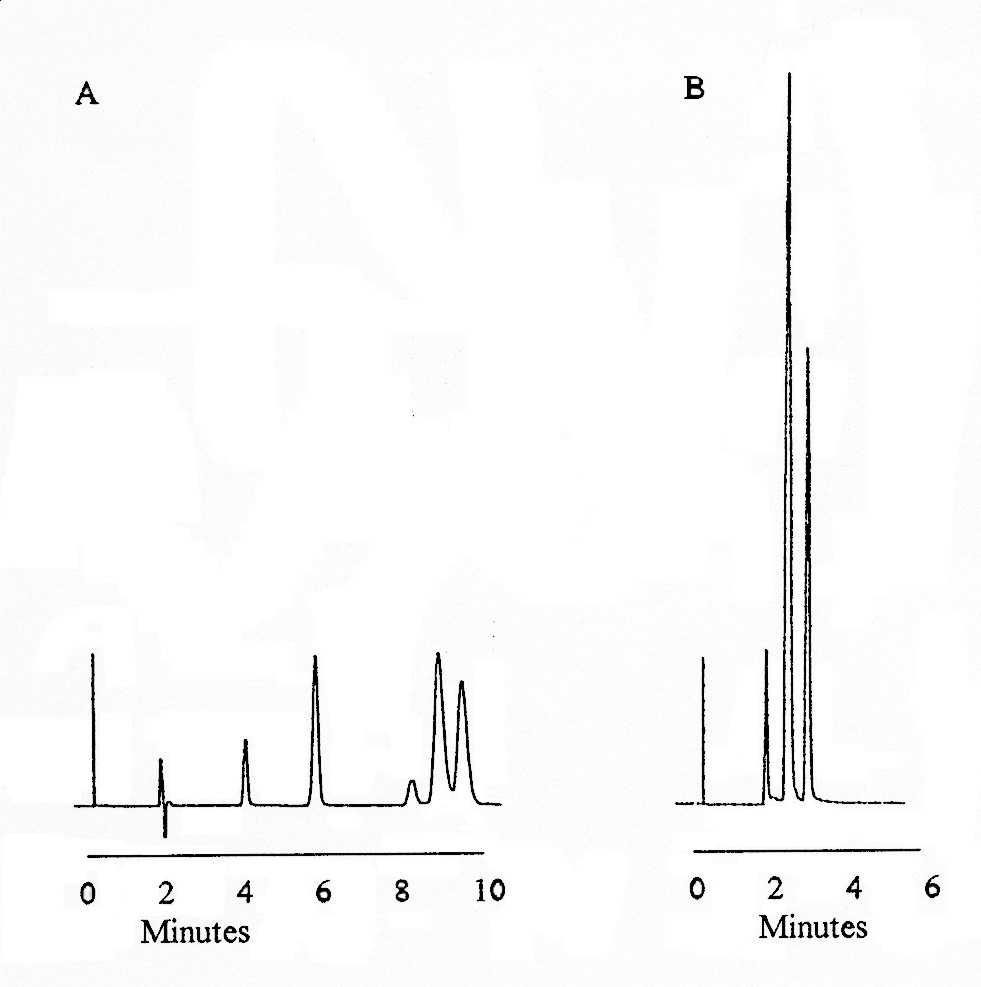
Exsil Diametric
Diametrically Different Selectivity
The Optimum Back-up Phase
When a separation fails on a conventional base deactivated, high purity C18 phase, the last thing a customer needs is another phase of similar selectivity. Success is maximised if the selectivity can be engineered to be significantly different from the conventional. Exsil Diametric achieves this by diametrically opposed hydrophobic and silanophillic selectivity compared to standard C18 phases.
Features:
- Diametrically different selectivity to standard C18
- Best alternative when current C18’s fail to deliver
- High polarity reversed phase
- High retention of bases for better MS sensitivity
- Water Wettable
- MS Compatible
- Excellent Peak shapes.
- Available in 1.5, 3, 5 and 10µm
Instead of trying to convert a customer from their preferred phase, Exsil Diametric C18 can be offered as the best backup column no matter what the customer’s preferred conventional phase.
Tremendous progress has been made over the last decade in the production of reversed phase packings which show minimal tailing with difficult compounds such as acids, bases and chelates. There are now many C18 packings that are capable of excellent performance on virtually all samples. However, a careful study of these packings shows that they follow common design principals: high phase loading and extensive end capping leading to highly hydrophobic/low silanophillic phases.
This combination of attributes works well but the complexity of current day samples means that in some cases, the selectivity will be inadequate. In this case, changing to another phase of similar attributes is unlikely to deliver the required change in selectivity.
Exsil Diametric C18 delivers distinctly different selectivity
The phase gives a diametrically opposite hydrophobic/silanophillic balance to conventional C18 phases and maximises the possibility of improvement in the resolution of the sample.
The difference in selectivity is illustrated below:
Polar embedded phases can also be used to provide a different selectivity but in reality, the differences are limited and primarily result in a lowering of hydrophobicity while maintaining similar silanophilicity.
Recently, Snyder et al, described a test system which utilises retention data from 16 different compounds at two pH’s to determine 6 coefficients which describe the hydrophobicity (H), steric accessibility (S), hydrogen bonding at basic sites (A), hydrogen bonding at acidic sites (B), ion exchange at pH 2.8 (C1) and at pH 7 (C2).
Typical values for two conventional high purity C18’s and Exsil Diametric C18 are shown below
The data clearly illustrates the reduced hydrophobicity; the increased steric accessibility and increased silanol/ion exchange activity of the Exsil Diametric C18.
Plotting the retention of the Snyder solutes on a conventional high purity C18 against another high purity C18 and Exsil Diametric C18 demonstrates the differences in selectivity that this delivers
While the two conventional C18’s are highly correlated (R2 = 0.9994), the Exsil Diametric C18 and the conventional C18 show very little correlation (R2 = 0.4347).
Benefits of Alternative Selectivity
- Reduced Hydrophobic/Silanophillic Balance at pH 3
The alternative selectivity provided by the change in the Hydrophobic/Silanophillic balance at pH 3 allows much faster analyses for samples with a wide range of polarities. The simple mixture of N, N’-Diethylacetamide, 5-Phenylpentanol and Ethylbenzene shows that the Exsil Diametric C18 maintains the retention of the polar N, N’-Diethylacetamide while reducing the excessive retention of the Ethylbenzene leading to a reduced analysis time from 9 to 2 minutes. The solvent strength for the conventional phase could be increased to reduce the Ethylbenzene retention but would result in the N, N’-Diethylacetamide eluting at the solvent front.
This difference in selectivity can be put to good use in the analysis of metabolites and degradants where the common problem is polar compounds eluting near the solvent front while the more nonpolar parent compound is strongly retained. Exsil Diametric C18 solves this problem by retaining the polar metabolites and reducing nonpolar retention. This gives shorter analysis times and can often eliminate the need for gradient elution. In the case of Pirimicarb and its degradation products, the Exsil Diametric C18 gives better resolution of the initial pair and shorter analysis. The resolution of the initial pair on the standard C18 can be increased to match the Exsil by reducing the acetonitrile level to 13% but he total analysis time increases to 18 minutes.
B) Higher Base Retention
The high level of silanol and cation exchange activity in Exsil Diametric C18 leads to significantly higher relative retention of bases at both low and neutral pH.
This is demonstrated in Fig 3 where an elution reversal of the acid and base occurs with the Exsil at pH 3.
The higher base retention of Exsil Diametric C18 can be used to good effect for example in the analysis of Nicotine in Tobacco Leaf. On a conventional C18, the high degree of base deactivation leads to the Nicotine being eluted along with the excipients in the solvent front. The higher retention on the Exsil Diametric C18 allows the Nicotine to be retained and elute after the solvent front.
The higher base retention is still apparent at neutral pH where it assists MS detection by allowing the use of higher levels of the organic component in the eluent unlike polar embedded phases which require less organic.
In this case, Amitriptyline retention is x 4 higher on the Exsil Diametric C18 while Procaine/Lidocaine retention is also reversed again illustrating the different selectivity.
Retention is again higher with these strong bases.
Doxepin is resolved into two isomers on the Exsil Diametric C18 but are unresolved and coleutes with Nortrityline on the conventional phase.
Despite the high retention, good peak shape is maintained at this pH with this volatile buffer.
Exsil Diametric C18, delivering proven benefits.

